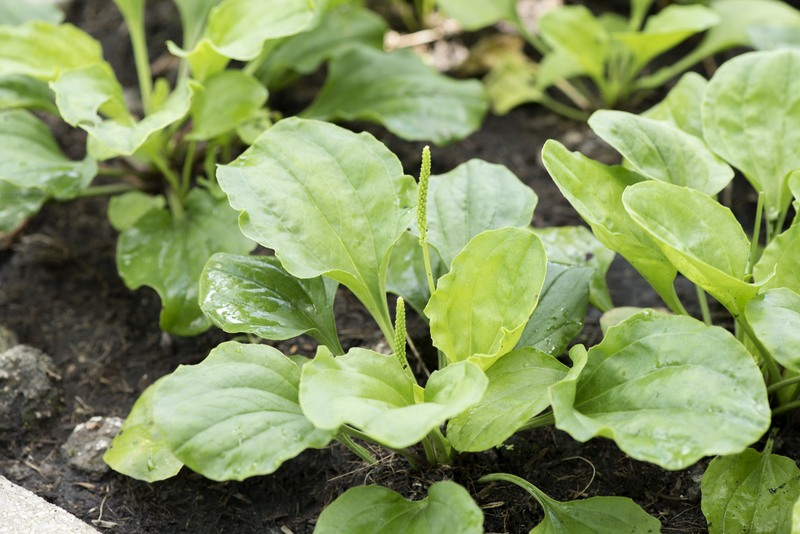Guarding Your Green Haven Against Harsh Winds
Posted on 04/09/2025
Guarding Your Green Haven Against Harsh Winds: A Comprehensive Guide
Is your cherished garden constantly at the mercy of gusty winds? Whether you're an urban gardener or tending a sprawling backyard, protecting your green haven from harsh winds is crucial for the health, beauty, and productivity of your space. In this article, we'll explore actionable strategies and expert advice to shield your plants, preserve your landscape, and nurture your garden even in the face of blustery weather.
Why Your Garden Needs Protection from Strong Winds
Harsh winds can wreak havoc on gardens, causing physical damage, stunting growth, and drying out soils and foliage. Exposure to persistent or strong gusts can lead to:
- Bent or broken stems and branches
- Desiccation (drying out) of leaves and soil
- Reduced pollination as insects avoid windy areas
- Damage to delicate flowers and fruit
- Soil erosion and loss of valuable nutrients
Understanding the risks underscores the importance of wind protection for your garden. Let's delve into the best ways to create a resilient, thriving outdoor space.

Assessing Your Garden's Wind Exposure
Before implementing garden wind barriers or planting strategies, assess the wind patterns in your location. Ask yourself:
- What is the prevailing wind direction in your area?
- Are there natural shelter points (like walls, hedges, or trees)?
- Where do your most exposed or vulnerable plants reside?
- Have you noticed particular areas where plants tend to suffer repeatedly?
Mapping these factors will help you tailor your protection efforts effectively.
Top Strategies for Guarding Your Green Haven Against Harsh Winds
It's important to combine short-term solutions with long-term investment in structural wind breaks and plant choices. Below are time-tested techniques for shielding your green oasis from unruly winds.
1. Installing Physical Wind Barriers
Wind barriers, or windscreens, are among the most effective tools for immediate protection.
Types of Wind Barriers:- Fencing: Choose slatted wooden fences, woven willow, or other permeable materials. Solid walls create turbulence; semi-permeable screens break the wind's force effectively.
- Hedges and Shrubs: Living green windbreaks like laurels, junipers, boxwoods, or arborvitae offer year-round protection and habitat for beneficial wildlife.
- Temporary Screens: Use burlap, netting, or mesh panels for seasonal defense, especially in vegetable beds or around young trees.
Tip: The ideal windbreak filters around 50-60% of the wind. Too solid a barrier can cause eddies that may increase plant damage behind the structure.
2. Planting Strategic Windbreaks
Natural windbreaks offer both beauty and resilience, becoming sturdier with each passing year.
- Layered Planting: Arrange plantings in "layers," starting with tall trees or shrubs at the rear, then medium, and small species at the front.
- Choose the Right Species: Fast-growing, dense evergreens like spruces, pines, or privet hedges are classic choices. For biodiversity, mix with deciduous shrubs and underplant with perennials.
- Offset Rows: Planting in staggered rows improves wind reduction better than single straight lines.
Long-term wind protection for gardens means thinking not only of the structure but also of how these living barriers enhance year-round interest and support local ecosystems.
3. Protective Structures for Sensitive Plants
Some plants, especially vegetables, seedlings, and ornamentals with delicate foliage, may require targeted protection:
- Cloches and Cold Frames: Cover vulnerable beds or seedlings with glass or plastic domes to shield from wind and retain warmth.
- Row Covers and Tunnels: Lightweight fabric draped over hoops or stakes to protect rows of crops or bedding plants from wind and pests.
- Garden Netting: Especially useful for rooftop and balcony gardens, netting can be quickly attached to railings for short-term shelter.
4. Proper Plant Choices and Placement
Choose plants that can withstand wind for front lines, and shelter sensitive varieties behind hardier companions:
- Wind-Tolerant Species: Ornamental grasses, lavender, rosemary, and native shrubs tend to be naturally sturdy.
- Group Plantings: Massing similar plants together lessens individual exposure and increases group resilience.
- Microclimates: Place your most prized specimens in naturally protected pockets, or near existing structures that deflect wind.
5. Improving Soil Health and Ground Stability
Wind isn't the only risk--soil erosion and drying can be just as damaging:
- Mulching: A thick layer of organic mulch shields roots, conserves moisture, and prevents topsoil loss.
- Ground Covers: Low-growing plants or dense turf anchor the soil, further reducing wind damage.
- Soil Amendments: Well-structured, organic-rich soils are better able to retain moisture and resist compaction.
Special Considerations for Different Types of Gardens
Every green space has its own challenges. Here's how to adapt wind safety techniques for your unique haven:
Urban and Balcony Gardens
- Container Stability: Choose heavy or weighted pots; conceal containers with lattices or screens.
- Strategic Placement: Group containers near walls for extra protection, or use shelving with built-in windbreaks.
- Use Fabric Skirts: Secure skirts or mesh around railings to reduce turbulence at plant height.
Vegetable and Kitchen Gardens
- Staking and Tying: Regularly support tomatoes, beans, and other tall crops with sturdy stakes and soft ties.
- Intermediate Screens: Move portable screens as needed during vulnerable periods, such as seedling establishment.
- Plant Low Beds: Keep most delicate crops close to the ground with raised or sunken beds for natural shelter.
Flower Borders and Ornamental Spaces
- Diversify: Mix upright and trailing varieties to break up wind flow.
- Deadhead Regularly: Removing spent blossoms decreases wind drag.
- Install Decorative Fencing: Trellises and screens offer both wind protection and aesthetic value.
Maintenance Tips to Enhance Wind Protection
- Inspect Regularly: After major storms, walk your garden and re-secure plants, supports, and screens.
- Annual Pruning: Prune dead or weak branches from trees and shrubs to prevent breakage.
- Replenish Mulch: Top up mulch each season to maintain coverage and moisture retention.
- Adapt and Upgrade: Adjust your strategies as new problem areas arise or your landscaping matures.
The Role of Sustainable Windbreaks
As more gardeners embrace sustainability, living windbreaks are gaining popularity for their enduring benefits:
- Habitat Creation: Dense hedges support birds, beneficial insects, and even small mammals.
- Year-Round Beauty: Mix evergreen and deciduous plants for four-season color and texture.
- Edible Windbreaks: Incorporate fruiting trees and berry bushes for increased garden productivity.
Remember: Carefully positioned, diverse plantings not only safeguard your green sanctuary from winds but also contribute to local biodiversity and ecological balance.

Frequently Asked Questions about Garden Wind Protection
-
How high should my windbreak be?
The protective zone extends roughly ten times the height of your barrier. For example, a two-meter hedge shields an area approximately twenty meters downwind. -
Should I use a solid fence or a permeable screen?
Permeable barriers (with about 50% open space) reduce wind speed more evenly and cause less turbulence than solid structures. -
What are the fastest-growing windbreak plants?
Popular choices include willows, Siberian elms, leyland cypress, privet, and bamboo, but always choose non-invasive, local species where possible. -
Can I use recycled materials for DIY wind screens?
Yes! Reclaimed wood pallets, woven branches, or repurposed mesh make excellent eco-friendly windbreaks.
Conclusion: Enjoy a Protected, Flourishing Green Retreat
Nurturing your garden's defenses against strong winds preserves its health, beauty, and productivity. By evaluating exposure, investing in effective barriers, and selecting the right plants, you transform your vulnerable outdoor space into a resilient sanctuary.
Whether you adopt temporary fixes or sustainable, living solutions, guarding your green haven from harsh winds empowers you to enjoy your landscape through all seasons.
Take action today to ensure your green spaces remain lush, vibrant, and wind-resilient for years to come!



